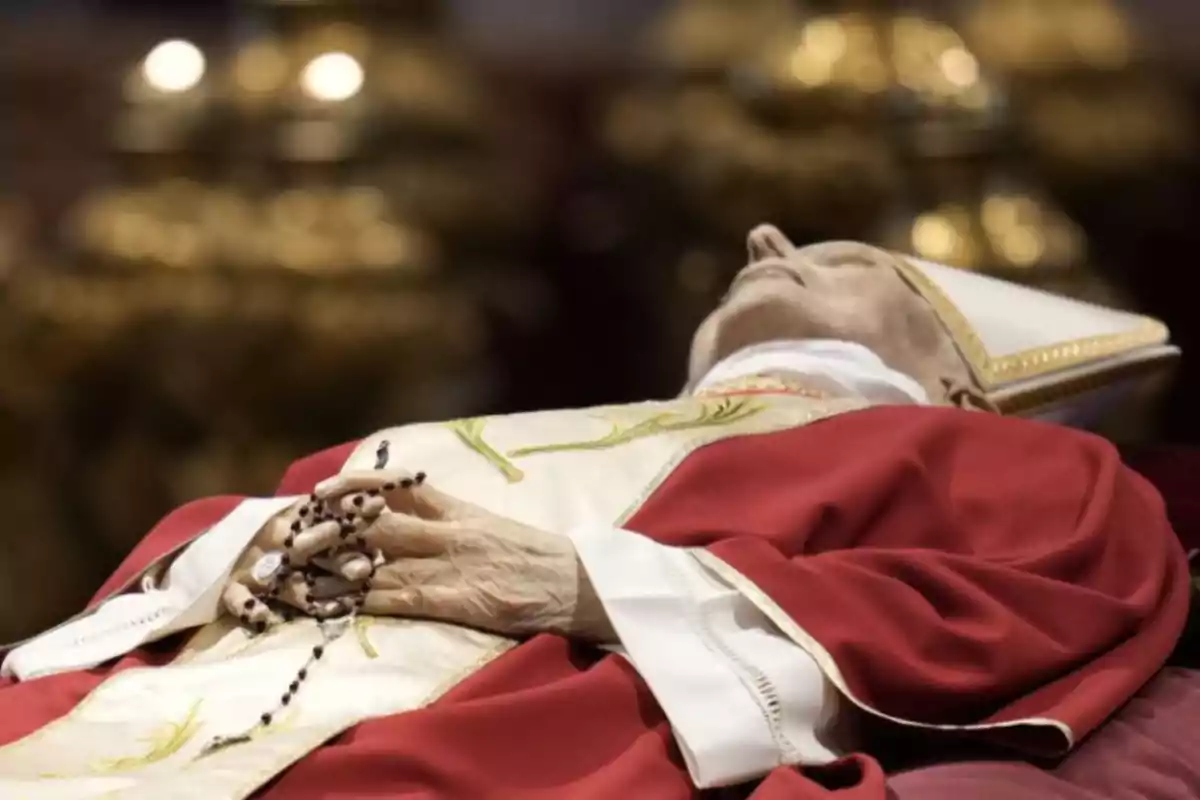
The fate of Pope Francis' body: no luxuries and in a wooden coffin
Breaking with tradition, the Pontiff requested an austere burial without complex embalming
Pope Francis decided to leave behind centuries of funeral pomp. In November 2024, he requested to be buried in a simple wooden coffin, avoiding the traditional three coffins of cypress, lead, and oak.
Additionally, he expressed his wish not to be displayed on a platform in St. Peter's Basilica and to rest, after his death, in the Basilica of Santa Maria Maggiore in Rome. Each of these decisions reflected his austere lifestyle and his vision of a close and humble Church.
These changes were part of a broader reform in papal funeral rituals that he himself introduced, seeking greater sobriety.
What is done with the body: techniques and exceptions in papal funerals
The death of a pope has historically been surrounded by solemnity and symbolism. However, there is no strict rule about what to do with his body. Over time, pontiffs have chosen various practices according to their beliefs.
In recent times, thanatopraxy has become popular, a technique of temporary preservation that replaced traditional embalming. This option was applied to the body of Benedict XVI after his death on December 31, 2022. The procedure, carried out by a medical team led by Dr. Andrea Fantozzi, allowed for his public display without visible alterations.
John Paul II also received the same treatment before his wake in St. Peter's Basilica. After his funeral, he was buried in the Vatican grottos.

In contrast, popes like John Paul I and Paul VI rejected all forms of artificial preservation. Both bodies deteriorated rapidly during their wakes, in line with their personal decisions for sobriety.
Historical embalmings: between success and failure
The case of John XXIII was one of the most remembered. His body, embalmed with special effectiveness, was so well preserved that when exhumed in 2001, it was displayed in a glass urn. Many faithful saw it as a sign of holiness.
Not all embalmings were successful. The embalming of Pius XII in 1958 was a complete failure. His body suffered rapid decomposition, with swelling and bad odors that forced the Vatican to review the methods used. Something similar happened with Leo XIII, although to a lesser extent.
Each pontiff, a unique mark
The post-mortem decisions of the popes spoke not only of funeral techniques but also of personal convictions. The way they wanted to be remembered was reflected in their bodies, in how they were laid out, and in their burials.
Pope Francis's choice, marked by humility, not only modified an ancestral rite. It also left a clear final message: simplicity as a path to the essential.
More posts: